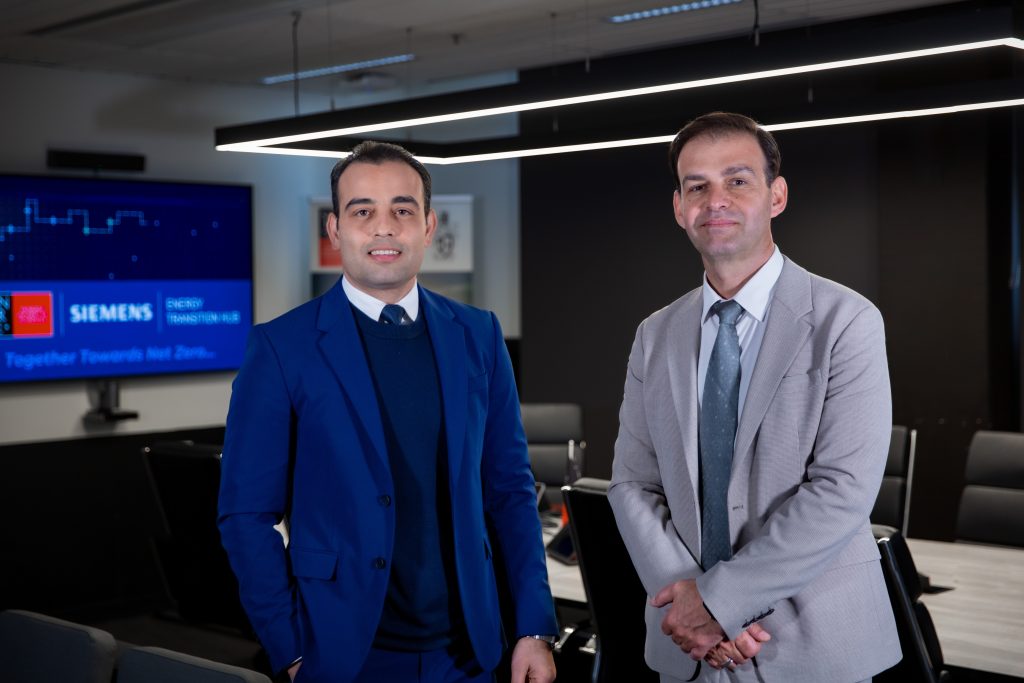The new Siemens Swinburne Energy Transition Hub will drive cutting-edge research with industry to develop innovative and cost-effective decarbonisation solutions.
Problems the energy sector faces are often tackled purely from a research or educational perspective, according to Associate Professor Mehdi Seyedmahmoudian of Swinburne University of Technology.
“Energy is a massive hot topic at the moment,” he said. “It can get very political and from an industry perspective, the solutions are often falling short because they lack innovation.”
The Siemens Swinburne Energy Transition Hub was born out of a need to address this problem.
“The hub is very outcome-oriented, ensuring we focus on applied research that makes a tangible difference. We use industry standards to solve problems when they arise.”
Reaching goals
The Siemens Swinburne Energy Transition Hub has four main objectives:
1. Foster innovative collaboration between academia and industry
“Most industries have their own research and development, which can be very expensive to run, or they rely on consultancy groups,” said Seyedmahmoudian. “We often find that academics focus on blue-sky research and it might not end up being used. We work directly with the end-user to make sure we’re bridging the interests of academic and industry and helping it to become commercialised.”
2. Drive cutting-edge research and development
The hub conducts pioneering research on new technologies that enhance energy efficiency, integration, storage and transportation. It also focuses on improving existing frameworks and technologies to address the challenges of the energy grid.
“We can only address the challenges of the energy transition when innovation is standardised,” said Seyedmahmoudian.
“If an industry body such as a grid provider approached us, we would conduct a deep analysis into the problem they’re facing. We’d then propose a solution that’s both innovative and relies on IT industry standards. That’s a really powerful combination.”
3. Accelerate digitalisation for the energy transition
By leveraging digitalisation and Siemens’s expertise, the hub enables the creation of digital twins of energy grids, allowing simulations, scenario mapping and testing of new solutions. This contributes to Australia’s carbon reduction targets and the global challenge of energy transition.
“We provide students with hands-on experiences and we also help to develop proof of concepts, and then software that can enable the simulation,” said Seyedmahmoudian. “We simulate everything using industry standards.
4. Enhance education and upskilling
The hub provides valuable opportunities for Swinburne students and industry professionals to upskill in next-generation energy technologies and future electrical networks.
Short courses and the integration of Siemens software and real-world industry experience into engineering technology courses — such as Swinburne’s Bachelor of Engineering (Honours) majoring in Electrical and Electronic Engineering — empower learners with practical knowledge.
It is expected that the hub will be accessed by as many as 1300 students per year.
“We offer a number of electrical engineering and energy units, and have a huge amount of energy storage related software for undergraduate and postgraduate students to use,” said Seyedmahmoudian.
The hub has software packages which graduate students will be able to use.
“This is in line with Swinburne’s graduate-ready mission,” he said. “We don’t want our students to have to complete specific courses to become familiar with industry software when they enter the workforce. They would have already learnt it at university through our hub.”

Designing reliable solutions
Innovative solutions are needed to tackle the energy crisis, but innovation needs to be paired with a steady and measured approach.
“There are a lot of issues that can emerge, such as security issues, if we don’t conduct a proper analysis. We need innovation but it needs to be done carefully,” said Seyedmahmoudian.
“That’s what our hub provides: programmatic, reliable, innovative technological solutions to power the energy transition.”
“Through this initiative we will be using leading technology from Siemens to test new, creative solutions through digital simulation, allowing for faster and more efficient commercialisation, where advances in energy tech and renewable energy integrations can do the most good: on the grid and in our homes,” said Professor Alex Stojcevski, Dean of Swinburne’s School of Science, Computing and Engineering Technologies.
For industry professionals interested in collaborating with the hub or accessing its cutting-edge technology, reach out to Associate Professor Mehdi Seyedmahmoudian (mseyedmahmoudian@swin.edu.au) for more information.